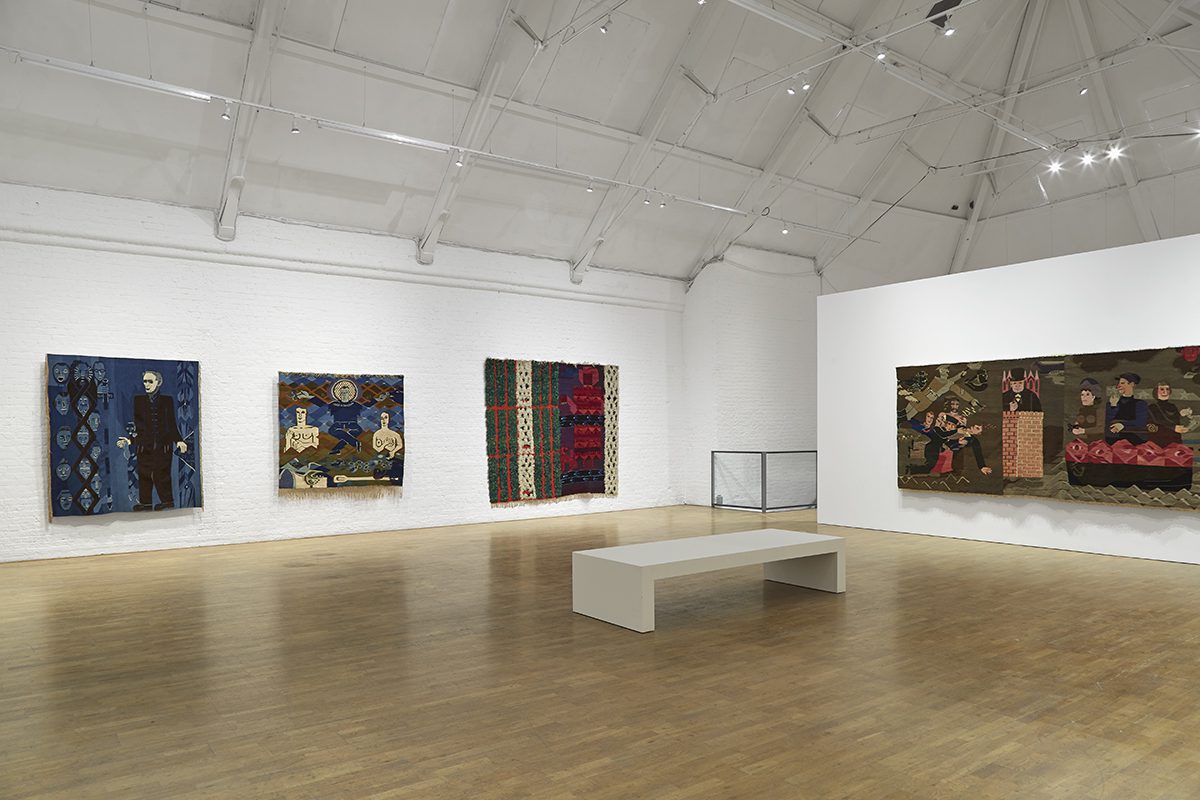The outstanding Scandinavian artist Hannah Ryggen finally receives her first major UK presentation at Modern Art Oxford. This hidden gem has finally been revealed, and the artist’s socio-political commentary is as sharp now as it was daring in her own day.
This socio-political commentary openly ridiculed Nazi atrocities and tyrannical governance
The exhibition surveys the artist’s career, focusing mainly on Ryggen’s intricate politicised tapestries; maybe a little less visually vibrant with the passage of time, yet infused with a sense of the period permeating through the weave, and the effect is truly transportive.
The artist was born in 1894 in Malmö, Sweden; Ryggen’s introduction to art began when working as a teacher. The artist left the practice of painting in favour of weaving, after a study visit to Dresden in 1922. Ryggen later moved to Ørlandet on the Fosen peninsula with her husband, the Norwegian painter Hans Ryggen – a remote region in Norway’s Trondheimsfjord. It was here that the artist experienced the Nazi occupation of Norway, including the devastating impact on her own family, and those who attempted to resist that occupation. Her husband was among the pacifists imprisoned.
It was then that the artist’s tapestries became her own form of resistance, critiquing humanity through a veil: the seemingly ‘crafty’ warmth of weaving; the artist hid her resistance in plain sight, directing her artist’s gaze towards those who would threaten her pacifist and communist sympathies. This became an early critique of socio-political justice – or lack thereof.
This focus first began with the 1935 tapestry ‘Etiopia’ (Ethiopia), which was a direct response to Benito Mussolini’s invasion of the African country. Its lack of subtlety (a spear through Mussolini’s head) – which was censored through folding the image behind the rest of the tapestry when exhibited at the Paris World’s Fair in 1937, and was also shown next to Picasso’s Guernica which was left entirely uncensored – would go on to become the artist’s signature component; the ongoing leitmotif of Ryggen’s work as an audacious socio-political commentator.

This socio-political commentary openly ridiculed Nazi atrocities and tyrannical governance, as with the artist’s work ‘6 October 1942’ – created only a year later and during the occupation – which focuses on Norwegian actor and theatre director Henry Gleditsch, whose satirical style provoked the German authorities; resulting in his execution in 1942. The scene includes Gleditsch being executed by Hitler, who is represented with oak leaves coming out of his behind. Churchill is to the right, representing Ryggen’s hope.
We also visit the horrors of nuclear power in the post-war age, with ‘Mr Atom/H.K.H Atomsen 1952’, the artist delves into the symbolic with the ‘Atom King’ enthroned above Adam and Eve, cross-legged and serene, arms outstretched, conjuring death. In hindsight the work summons Oppenheimer’s grief; ‘I remembered the line from the Hindu scripture, the Bhagavad-Gita; Vishnu is trying to persuade the Prince that he should do his duty and, to impress him, takes on his multi-armed form and says, “Now I am become Death, the destroyer of worlds.” ‘
But beneath these searing commentaries, the truth of the woven image is that it is also an object. Buried in the binds of the tapestry, sculpted from material, bound with the dust of ages, are smells in memoriam, visceral moments in history – and for a moment at least – the viewer is drawn back in time via the ignition of trace memories, an unintentional aspect to Ryggen’s work that equally conjures the period in all of its difference and darkness.
Lead image: Hannah Ryggen, Woven Histories, installation view, Modern Art Oxford. Photo: Ben Westoby © 2017
Words: Paul Black @Artjourno
Hannah Ryggen: Woven Histories – Modern Art Oxford – 11 November 2017 to 18 February 2018

